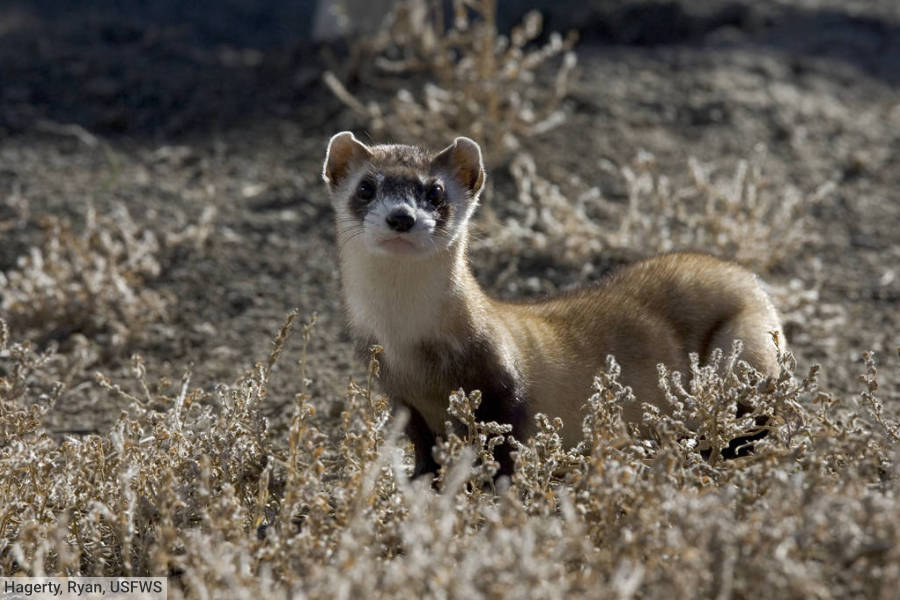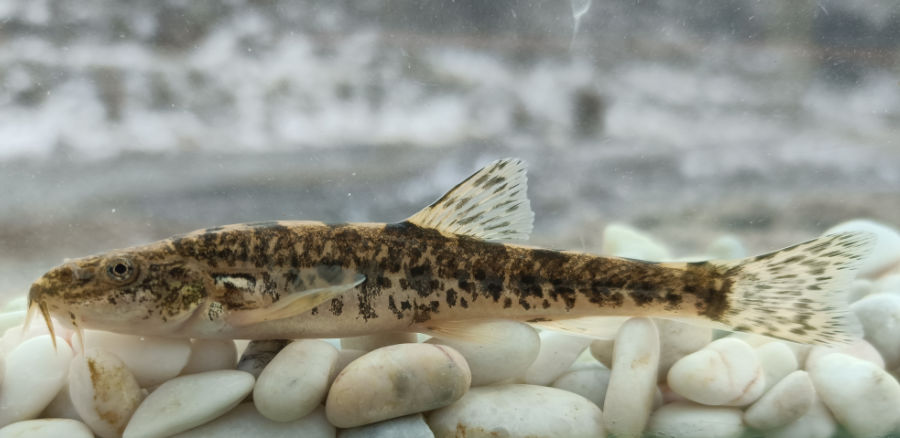On this page, we take a look at animal species that went extinct in 2023…
Sadly, just like every other year, 2023 saw several species disappear from our planet, never to return. Below, we list the animals that were officially declared extinct in 2023 by the IUCN.
(Note: these animals may have become extinct several years ago, but were only officially listed as being extinct in 2023.)
IUCN Red List
Numerous wildlife organizations monitor wild animal populations in order to identify species that are in danger of becoming extinct.
One of the largest is the International Union for Conservation of Nature (IUCN), who publish a worldwide “Red List” of endangered animals. (Site)
The Red List has two categories for extinct animals: Extinct In The Wild, and Extinct.
Extinct In The Wild
As the name suggests, animals that are “Extinct In The Wild” are no longer found in their natural habitats, but still exist in captivity (zoos, reserves, etc.).
There is some hope for these animals; a small number of species once declared extinct in the wild, including the black-footed ferret, pictured below, have been reintroduced to their native habitats.
However, such schemes are not always successful. Several reintroduced black-footed ferret colonies subsequently failed.

No new species were listed as being extinct in the wild in 2023 by the IUCN. Examples of species listed as being extinct in the wild in previous years include the Wyoming toad, Dabry's sturgeon (also known as the Yangtze sturgeon), Christmas Island Chained Gecko, Polynesian Tree Snail, and Hawaiian Crow.
- You can see a list of animals currently rated "Extinct in the Wild" on this page: Animals That Are Extinct In The Wild
Extinct
Animals rated “Extinct” are no longer found either in the wild or in captivity. Sadly, they have gone the same way as the dodo, passenger pigeon, thylacine, and T-rex, and will never again be seen on our planet.
Listed below are animals that were categorized by the IUCN as “Extinct” during 2023.
Although the animals on this page were officially declared extinct in 2023, the actual year of their extinction may have been earlier; several of the species below have not been seen for decades. Additionally, species are often assessed a year or more prior to results being published.
Animals That Went Extinct In 2023
Campo Grande Treefrog

- Type of animal: Amphibian
- Scientific name: Boana cymbalum
- Where found: South America (Brazil)
The Campo Grande treefrog was a mid-sized treefrog found in subtropical and tropical moist lowland forests in southeast Brazil.
The amphibian was only ever observed at two sites, both of which were located close to São Paulo, Brazil’s most populous city. Urban expansion from the 1950’s onwards engulfed both sites, and the Campo Grande treefrog has not been seen since the sixties.
Additional threats linked to the extinction of the Campo Grande treefrog include pollution from factories in the nearby city of Cubatão, and the amphibian chytrid fungus Batrachochytrium dendrobatidis, which has caused the extinction of numerous other amphibian species. (source)
The Campo Grande treefrog was known for its loud and distinctive vocalizations; a sound that will never again be heard on our planet.
Pointed Plateau Loach (尖头高原鳅)

- Scientific name: Triplophysa cuneicephala
- Type of animal: Fish
- Where found: Asia (China)
The Chinese fish 尖头高原鳅, whose simplified Chinese name translates to “pointed plateau loach”, was a species of stone loach found in streams near Beijing in China.
The pointed plateau loach was a member of the genus Triplophysa, a group of stone loaches commonly found in the high-altitude and cold-water environments of Central Asia, particularly in regions such as the Tibetan Plateau, the Tien Shan mountain range, and other parts of western China.
Like other stone loaches, the pointed plateau loach had a slender, elongated body with a mottled, brownish coloration for camouflage among riverbeds. With barbels around its mouth for sensing food in murky waters and a slightly flattened underside, it was perfectly adapted for life at the bottom of clean, slow-flowing streams.
The pointed plateau loach became extinct as a result of habitat loss, the streams in which it lived having been changed to reservoirs. The species had not been seen since the 1950’s.
Cheongpung Blind-Beetle
No Photo Available
- Scientific name: Coreoblemus parvicollis
- Type of animal: Insect
- Where found: Asia (South Korea)
Like other animals evolved to live in caves, the Cheongpung blind-beetle, as its name suggests, was blind. (In the subterranean darkness, vision is unnecessary, and resources are better allocated elsewhere.)
The Cheongpung blind-beetle was one of over 40,000 species belonging to the ground beetle family Carabidae.
The species was discovered in Cheongpungpunghyeol Cave, a 200 m limestone cave located close to South Korea’s Hankang River, and was never seen in any other location.
The cave-dwelling insect is thought to have become extinct following the flooding of its cave and the surrounding area by a vast man-made lake caused by the construction of the Chungju Dam, South Korea’s largest dam.
Several surveys carried out in the 2000’s failed to locate a single example of the Cheongpung blind-beetle, and in 2023 the species was officially declared extinct.
Java Stingaree

- Scientific name: Urolophus javanicus
- Type of animal: Cartilaginous fish
- Where found: Asia (Java Sea off Jakarta, Indonesia)
The Java Stingaree, Urolophus javanicus, was a species of stingray native to the Java Sea off Jakarta, Indonesia.
The extinct fish was part of the Urolophidae family, a group of stingrays known as stingarees. Like other stingrays, the Java stingaree was equipped with a venomous stinging spine on its tail.
The only known Java Stingaree was a specimen acquired in 1862 by German zoologist Eduard von Martens, who saw the fish for sale in a Jakarta fish market.
The zoologist described the species in an 1864 journal, naming it Trygonoptera javanica (the species was later placed in the genus Urolophus). No other examples of the species have been found in the 150-plus years following its discovery.
With a length of 33 cm / 13 in, the Java Stingaree was a relatively small stingray. It had an oval-shaped pectoral fin disc, and was brown, with both darker and lighter spots.
The Java Stingaree inhabited a region that has been under intense fishing pressure for many decades. Due to their popularity in eastern cuisine, the market for shark (and ray) fins is highly lucrative, causing these fish to be targeted by local fisheries. A vast amount of pollution-causing urban development on the Jakarta Bay shoreline has caused additional difficulties for numerous marine species that inhabit the area.
Further Reading
- You can see a list of recently extinct animals on this page: Recently Extinct Animals
- You can see a list of animals that went extinct in 2022 on this page: Animals That Went Extinct In 2022
- You can see more endangered animals on this page: Endangered Animals
- You can see more critically endangered animals on this page: Critically Endangered Species



Oh man I wish we were more careful.